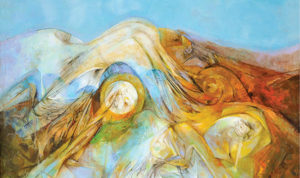It is well known from both his own writings as well as his biographical tradition that the most important contemporary Sufi in Rumi’s eyes was his mentor, Shams-e Tabriz. This can be seen in the many references he makes to Shams… In contrast to Rumi’s emphatic devotion, Shams was an unpopular figure among the religious establishment of Konya, and was either forced to leave or killed. Rumi also makes references to and writes about Sufis from the distant past, especially in his Masnavi and Fihe ma fih, giving the most attention to the most controversial figures. His opinions about such figures represent a useful means for situating Rumi among the diverse approaches to Sufism by highlighting his preferences in hotly contested issues.
Rumi makes references to and writes about Sufis from the controversial figures. His opinions about such figures represent a useful means for situating Rumi among the diverse approaches to Sufism by highlighting his preferences in hotly contested issues.
Rumi refers directly to concealed secrets a few times in his Masnavi, each time indicating that the secret is related to the identification of the mystic with God and the irrelevance of religious rules and dogma for such an individual, once again corresponding to biographical reports about his mystic heroes.
Rumi himself, in contrast to the mystic heroes of his writings, was able to maintain the respectability and influence that he already possessed as a seminary teacher before embarking on the mystical path under his mentor Shams-e Tabriz. Although that relationship was deemed a threat to his reputation by Rumi’s jealous students, the focus of their blame was Shams, as the antinomian outsider, and he soon disappeared. Rumi’s influence on local political leaders combined with his decision to return dutifully to training the seminary students whom he had inherited from his father can help explain how he managed to combine social respectability with his inclination towards the more scandalous mystics among the Sufis. Buy the current issue to read the entire article.
artwork ©Ramona R. Mitchell

